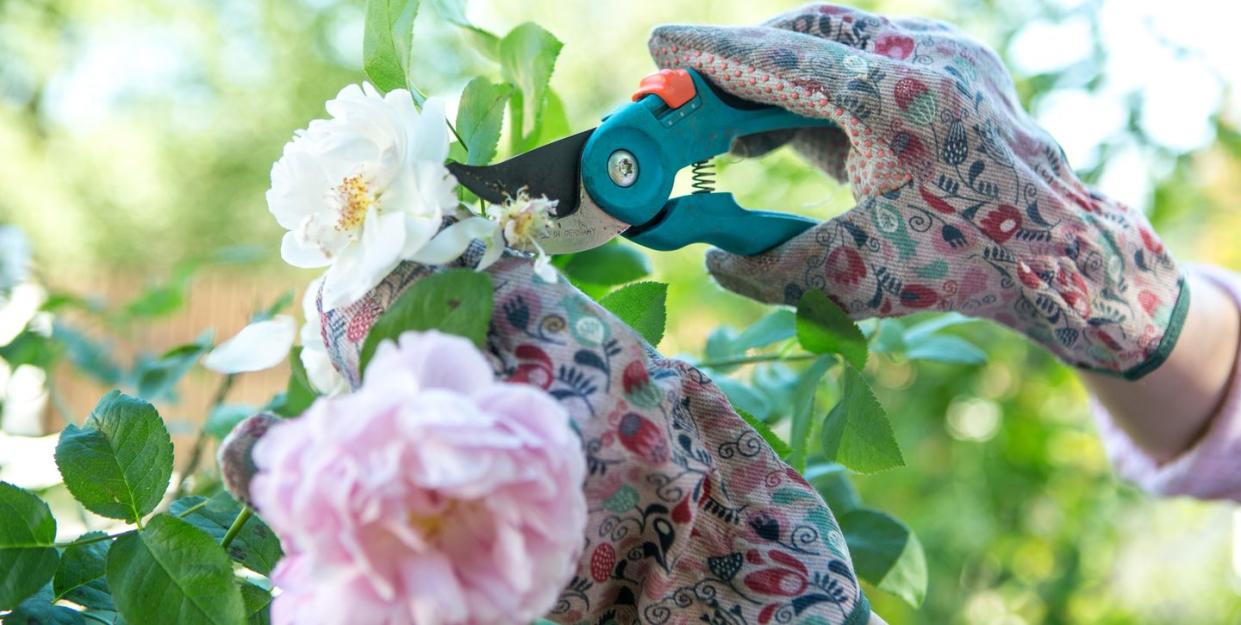Here's Why You Need to Be Deadheading Plant in Your Flower Garden

Deadheading your plants is a super-easy way to encourage more blooms. It sounds scary, but it’s actually just a term that means clipping off the spent blooms of plants.
You can deadhead annuals, perennials, and even some flowering shrubs. And you can deadhead flowers in the ground or in pots. Either way, if you spend a few minutes every morning as you wander around your garden sipping your coffee, removing spent flowers by snipping or pinching them off, you'll see a marked improvement in the number of flowers on each plant.
The main reason to deadhead is to encourage your plants to keep on blooming throughout the growing season. A plant’s job is to reproduce and create seeds for the next generation.
If you clip off the faded flowers, where the seeds form, the plant puts less energy into making those seeds and more into pushing out blooms. You get to enjoy flowers for a much longer period of time! It also neatens up your garden, flower beds, and containers.
Read on to learn how to deadhead your plants and what plants you should deadhead:
Why should I deadhead my plants?
While gardeners may want lots of pretty flowers, plants just want to reproduce. In a way, deadheading frustrates the flowers by making them work harder to produce their seeds. If you cut off the dead flowers, they’ll quickly push out more flowers.
Make sure to get the whole flowerhead, not just the petals. With some plants, such as marigolds and poppies, you can wait until the seeds form, then harvest seeds from the snipped flower heads to dry and plant next year. Yay for free plants!
How do I deadhead a plant?
If a flower has a thin or spindly stem, you can simply pinch off the dead flower head between your index finger and thumb once the flower is past its prime.
On thicker stems, such as rose bushes, butterfly bushes and peonies, use a pair of garden snips or pruners to make the cut. If a flower has its own stem, such as cosmos, it’s best to remove the entire stem, rather than leaving it sticking up. Be careful not to cut off new buds that haven’t opened yet.
Does deadheading work on every plant?
While deadheading will help many plants, there are some it works especially well for. Others can be deadheaded or not, but it won't make much of a difference to their flower production. Still others probably shouldn't be deadheaded, as it can diminish their beauty.
Annuals in general can benefit from deadheading. This includes marigolds, geraniums, cosmos, and old-fashioned petunias. (Newer re-blooming varieties of petunia have been bred to flower repeatedly without deadheading and won't benefit).
Annual herbs such as basil will also branch out and yield more of their delicious edible leaves if you pinch off the flowers as they appear. In this case, you don't need to wait for the flowers to wilt.
Some perennials perform better with deadheading. These include columbine, bee balm, blanket flower, campanula, lavender, peonies, salvia, speedwell, and tickseed.
Flowering bulbs such as daffodils won’t re-bloom if you deadhead them, but by cutting back the spent flower stem all the way to the ground, the plant will put more energy into developing a bigger bulb to bloom next year.
Some perennials and shrubs you should not deadhead. These are ones that develop attractive seedpods or dried flower heads. Those will add texture to the winter landscape and provide food for wildlife.
Plants to avoid deadheading include Autumn Joy sedum, rudbeckia, and coneflowers, which birds enjoy snacking on in the winter. Faded hydrangea flowers also dry to an interesting papery texture and remain intact most of the winter, providing interest in an otherwise boring landscape.
If you’re not sure if a plant should be deadheaded, it’s fine to leave it be: Nature knows what to do without your help, and it won’t hurt anything to leave it alone. Your bloom season just may be more brief.
You Might Also Like


